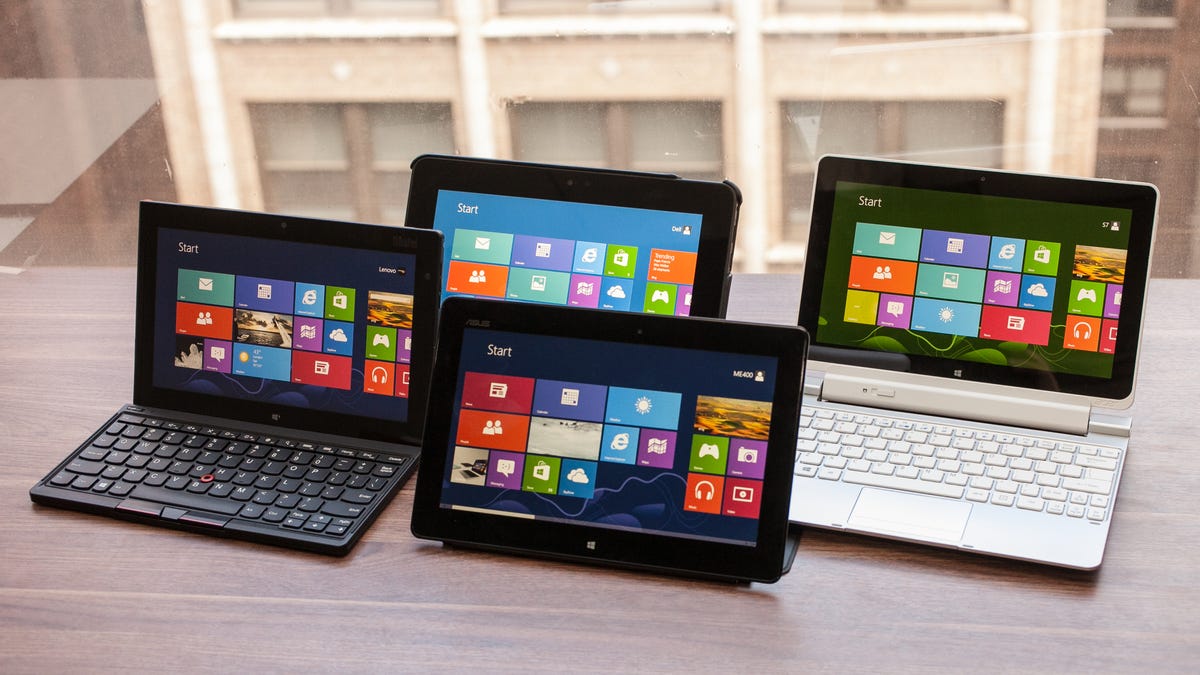What's the best low-power Windows 8 tablet?
With many Atom-powered Windows 8 tablets and hybrids to choose from, one stands out as the best of the bunch.

While there are some Windows 8 tablets that feature ultrabook-level performance, the majority of them use lower-power Intel Atom processors to keep costs down and battery life up.
Even though memories of the Intel Atom Netbook era may make one gun shy about using a low-power CPU, these systems all still run the full gamut of Windows 8 applications -- and even do a surprisingly good job at handling apps optimized for the Windows 8 experience, including IE10 and Netflix.
These are the Windows 8 "low-power" tablets, as we call them, that we've reviewed so far, all of which combine Intel Atom CPUs with 10- or 11-inch screens, 2GB of RAM, and 32 to 64GB of SSD storage. Prices range from as low as $499 up to over $800 after you add optional keyboard docks, which can be expensive, but are practically required for everyday computing.
Acer Iconia W510
Offering low-powered Intel Atom tablet/laptop hybrids for $750 or more is a dodgy proposition for budget-looking systems such as the Iconia W510, but all-day battery life is a great selling point.
Read the full review of the Acer Iconia W510.
Lenovo IdeaTab Lynx
The IdeaTab Lynx is a perfectly functional Windows 8 hybrid but lacks the lower price of some competitors, or better design and features of others.
Read the full review of the Lenovo IdeaTab Lynx.
Asus VivoTab Smart ME400
For a Windows 8 tablet, keyboard, and cover package for around $630, the VivoTab is a decent value, if you can get used to the nonstandard keyboard/cover combo.Read the full review of the Asus VivoTab Smart ME400.
Lenovo ThinkPad Tablet 2
The keyboard dock provides my favorite to-date Windows 8 tablet typing experience, and while I'm not likely to use it much, I like how the digitizer stylus is cleverly tucked into an inconspicuous slot on the left side of the tablet.
Read the full review of the Lenovo ThinkPad Tablet 2.
HP Envy x2
The HP Envy x2's capacity to be a full Windows 8 tablet or dock with a keyboard works as well as advertised, provided you're willing to live with slower performance at a high price.
Read the full review of the HP Envy x2.
Dell Latitude 10
At prices that aren't far off from midrange Core i-series ultrabooks with 500GB hard drives or 128GB SSDs, the combination of the Latitude 10 plus a dock and a keyboard feels expensive for the Atom experience.Read the full review of the Dell Latitude 10.
Scott:
It's really hard not to favor the ThinkPad Tablet 2. It has a compact design, lots of ports, durable-feeling build quality, and a fantastic little ThinkPad keyboard dock (although it lacks a touch pad, going for a red rubber "trackpoint" instead). If you want something that feels a lot more like a lap-friendly laptop and still has a detachable tablet, the HP Envy x2 is worth a look. It costs more but comes with a keyboard base that has a second battery and extra USB ports.
Dan:
The problem with the models here that form clamshell-like laptops when connected to a keyboard base, is that they make clearly inferior laptops, with stiff, hard-to-detach hinges and awkward top-heavy balance. The Lenovo ThinkPad Tablet 2 is more of a mini all-in-one desktop, and its clever keyboard dock holds the screen up without extra clips or release latches (but it still lacks an adjustable screen angle). In the end, that model comes out on top of the others (all of which have similar specs) because it has the tightest, most high-end design, and because it has the good sense to include a full-size USB port in the tablet itself.
As with the high-end Windows tablets, we've both zeroed in on the clear leader in this category, although none of the products here is frustration-free, and it's frankly hard to recommend any Atom-powered Windows 8 tablet to the average computer shopper. Which of these tablets do you think is best? Or, what would a real top-notch Windows 8 tablet need to succeed? Let us know what you think in the comments section below.



